#Kamakura period
Text
The transition from the ball to the severed head and then all that blood, flames and death kinda startled me ngl 💀
#逃げ若 #ElusiveSamurai
#the elusive samurai#Nige Jouzu no Wakagimi#hojo tokiyuki#ashikaga takauji#kamakura period#anime#japan#jidaigeki#historical anime#2024 anime
118 notes
·
View notes
Text

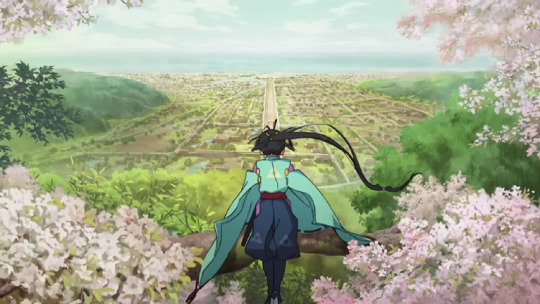


The Elusive Samurai (July 2024)
Set during the late Kamakura period, which follows the tale of Hojo Tokiyuki, a boy on the run after his family is overthrown by Ashikaga Takauji. With his only allies being a shady priest and his followers, the young lord must seek revenge and regain his glory, with his only weapon: a superhuman ability to flee and hide.
youtube
#the elusive samurai#Nige Jouzu no Wakagimi#hojo tokiyuki#ashikaga takauji#kamakura period#anime#japan#jidaigeki#historical anime#2024 anime
71 notes
·
View notes
Text
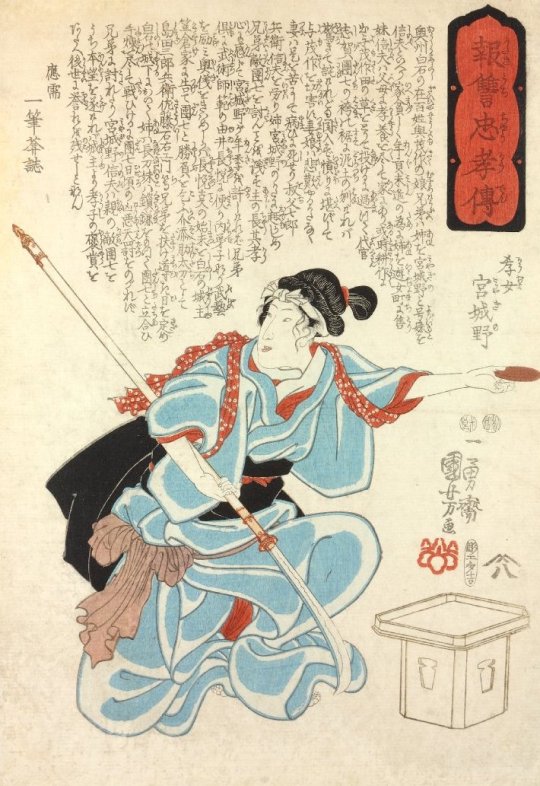
KOJO MIYAGINO: The Filial Using a Naginata (mid 1800s). Woodblock print, oban tate-e. 36.90cm x 25.40cm. British Museum.
What comes to mind when you hear the word samurai? Men wielding katanas? Ironclad Japanese warriors about to strike a blow? Or perhaps a robed samurai on the verge of self-sacrifice.
How about a kimono-wrapped lady on the verge of kicking ass?
While most women in feudal Japan were expected to adhere to traditional roles, samurai as a rising warrior class (actually called “bushi” before the Kamakura Period) included both men and women. However, "samurai" was a term reserved for men. Women "samurai" were deemed onna-musha (a female warrior on the offensive) or onna bugeisha, a warrior woman on the defensive.
Onna musha were rarer than their onna bugeisha counterparts, who were nevertheless formidable women. Onna bugeisha were trained in martial arts to defend their homes against the frequent ransacking that took place during the Warring States Period in feudal Japan. Their weapon of choice was the naginata, a curved sword mounted on a pole, first used by warrior monks in 750 A.D.
#onna musha#onna bugeisha#female samurai#japanese warrior women#warrior women#kamakura period#naginata#samurai#japanese history
19 notes
·
View notes
Photo
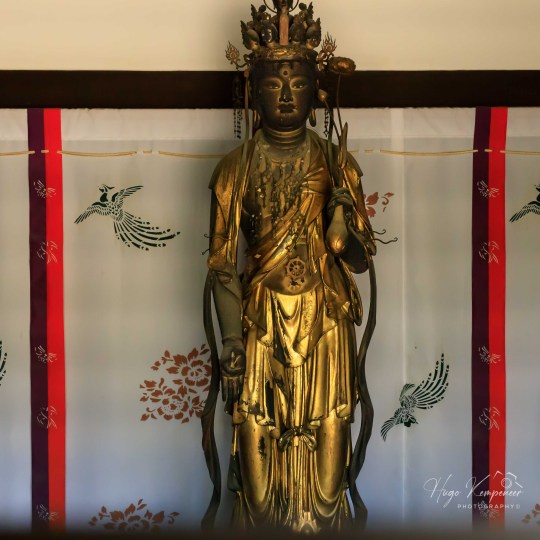
Several scenes of the temple grounds of Shin-Yakushi-ji in Nara, Japan.
#Buddhism#Empress Kōmyō#Japan#Kamakura period#Nara#Shin-Yakushi-ji#Shin-Yakushiji#Twelve Divine Generals#Yakushi Nyorai#travel#光明皇后#十二神将#新薬師寺#薬師如来#鎌倉時代
30 notes
·
View notes
Text

Tsurugaoka Hachimangu shrine phoenix motif, from one of the 13th century donated garments
6 notes
·
View notes
Text

2 notes
·
View notes
Text
Weekend treat: take a tour of Kamakura's famous hydrangea temples, visit historic spots which most Japanese people go through in school days, and take the Enoden at last!
12/6/2024
Owing to depression since I got into university, I'd missed an opportunity to go to my long-time ideal destination Kamakura; this short trip today was a kind of dream come true.
Last year, I ran into a TV program featuring Kamakura's famous hydrangea temples and then decided to tour the temples someday in June. Mom and I were off there before 7am in order to avoid the crowds, but there were so many people who must have been thinking of the same thing walking to Meigetsu-in temple(aka: Ajisaidera) in the strong sun.

As I'd read in some articles beforehand, there were many blue hydrangeas lining paths in the precincts but a crowd of people. I should have come earlier than 9am or around 8am, which might allow me to feel its picturesque scenery, nature and stillness to my heart's content alone/without any distraction. Stillness early in the morning must match this temple the most, I believe. I liked the combination/contrast between green and pale blue in there; plus, I couldn't take my eyes off the location which steep cliffs and cuts(mountains) covered with mosses look over and surround. That was absolutely majestic enough to let me connect with something great.

After Ajisaidera, we headed to another facility famous for hydrangeas in the area(closed to Kita-Kamakura station). That was a kind of gallery focusing on exhibits regarding hydrangeas, and its building was made of wood, creaking aloud when someone walked through the second floor, which I appreciated.

On our way to Kamakura station, we swung by Tsurugaoka Hachimangu Shrine, where some household was just having a wedding in the Shinto style, strolled Komachi-dori, a long shopping street, popping in boutiques for souvenirs and took a break at a cafe; mom ordered parfait with crème caramel on top.

Originally, we were due to visit Hase-dera temple for its flowers, as well, but I had to give up on that right before the entrance, because it claimed that there was over 80-minute wait even for entry at the moment. So, I opted for another spot, which was Great Buddha(aka: Kamakura Daibutsu). This historic site is so typical of educational travel destinations for school trips here in Japan that almost all the people who have grown up in Japan, except me, must have experienced the spot. As I wouldn't go to school, this was my first time to visit and see the Daibutsu in person. He looked not that bigger than I expected; therefore, I felt a sense of closeness to him and found him charming indeed. I could gaze at him all day long.

Before taking the Enoden for the first time, we did hydrate at a cafe closed to the station. It was less crowded with people on the platforms than I thought, and then I noticed that half of the passengers seemed to be students, which means the Enoden was transportation primarily for the locals although it was associated with tourism. Overall, I found Kamakura so attractive in terms of nature, architecture, historic background, a daily shopping situation, and the locals that it's been loved not only by tourists but also by residents for decades.
#weekend treat#short trips#japan#historic site#kanagawa#kamakura#summer#june#temple#hydrangea#enoden#great buddha#kamakura period#walking tour#architecture#nature#train#cafe#tourism
2 notes
·
View notes
Text
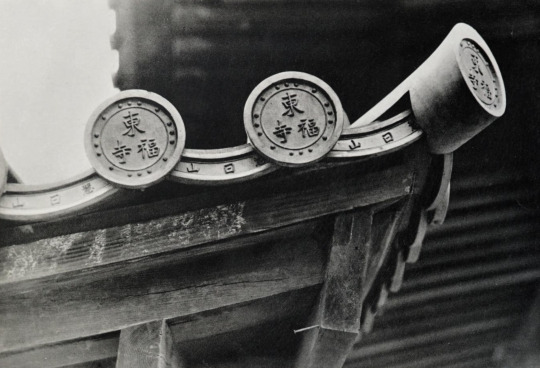
Tile roof of the Tōfuku-ji Temple, Kamakura period (1236). Tōfuku-ji, Kyoto, Kyoto Prefecture.
"Of these ornamental terminal tiles, one is decorated with the three characters of the name of the monastery, Tō-Fuku-ji, and the other with the monastery's sacred name, E-Nichi-Zan."
From "Japan: Art and Civilization" by Louis Frederic, published in 1971.
13 notes
·
View notes
Text

Lady Hangaku (Hangaku Gozen), by Yoshitoshi.
She took a prominent role in the Kennin Rebellion, an uprising against the Kamakura shogunate in 1201.
#Onna-musha#female warriors#Female warrior#Japan#Yoshitoshi#Lady Hangaku#Hangaku Gozen#Kamakura period#Heian period#Hangaku Jo#Horse#Japanese history
2 notes
·
View notes
Photo

Day 10: Lady Nijo!
Lady Nijo (as with almost all aristocratic women of her era, Nijo was a nickname, in her case “Second Avenue,” part of a contemporary trend in which the location of the street indicated social rank) was born into a high-ranking aristocratic family in Kamakura period Japan. Her father held a high position at court, and the Emperor had been one-sidedly in love with her mother; Lady Nijo herself was raised at court, and eventually became a concubine to Emperor Go-Fukakusa.
Her father’s death weakened her position politically, and she had an up-and-down relationship with the Emperor. It says something about the culture of the court at the time that Go-Fukakusa raised no objection to her three illegitimate children; rather, it was the Empress who protested Lady Nijo’s unsuitability as a concubine (and, possibly, the Emperor’s continued affection for her), and it was at her behest that Lady Nijo was relieved of her position at court.
Lady Nijo took vows as a Buddhist nun, and spent much of the rest of her life traveling. She traced the journeys of Saigyo, a poet of the previous century, and devoted time to her own literary efforts as well.
Her autobiography, Towazugatari, anglicized as The Confessions of Lady Nijo, was completed in 1307. It was nearly lost during the centuries that followed, but its rediscovery in the mid-twentieth century brought Lady Nijo back to the literary forefront; today, Towazugatari is considered one of the classics of Japanese literature.
#lady nijo#history#japanese history#kamakura period#awesome ladies of history#october 2022#towazugatari#my art
44 notes
·
View notes
Text
WHEN HE'S ONLY GOOD AT RUNNING AND HIDING BUT HE NEEDS TO SEEK REVENGE FOR HIS TOWN AND FAMILY TO REGAIN HIS GLORY!
#the elusive samurai#Nige Jouzu no Wakagimi#hojo tokiyuki#ashikaga takauji#kamakura period#anime#japan#jidaigeki#historical anime#2024 anime
18 notes
·
View notes
Text
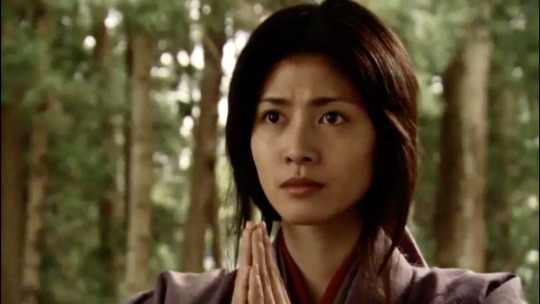





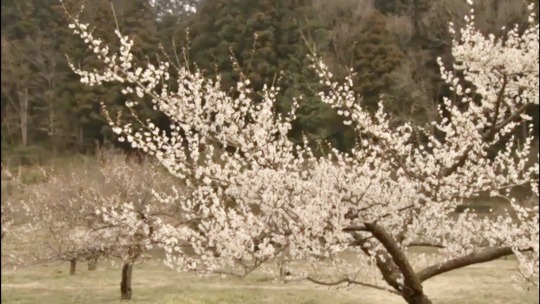

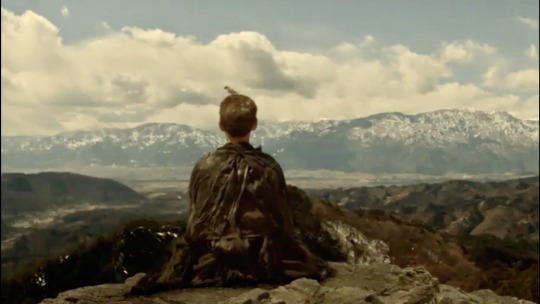

Zen (2009)
"We must create paradise here on Earth. But if this is paradise, why must people fight and suffer from illness, unable to escape the pain of death?"
youtube
The life of Zen Master, Dōgen. He went to China to attain enlightenment and returned to Japan during Kamakura Period, and introduced Zen to Japan in the form of the Sōtō school.
His teachings of new Zen Buddhism sparks outrage among existing Buddhist sect while attracting a few who wants to be free of pain and suffering, like a prostitute and a weathered Samurai.
#zen#禅#nakamura kankuro#uchida yuki#japanese movie#j movie#japanese film#japanese drama#j drama#jdrama#asian drama#asian movie#zen buddhism#dogen#Youtube#yuki uchida#kankuro nakamura#kamakura period#japan#zazen#buddhism#film aesthetic#aesthetics
10 notes
·
View notes
Text

2 notes
·
View notes
Photo

Several scenes of the temple grounds of Shin-Yakushi-ji in Nara, Japan.
#Buddhism#Empress Kōmyō#Japan#Kamakura period#Nara#Shin-Yakushi-ji#Shin-Yakushiji#Twelve Divine Generals#Yakushi Nyorai#travel#光明皇后#十二神将#新薬師寺#薬師如来#鎌倉時代
28 notes
·
View notes
Text
Yo.... Totally random and not at all related to my Hazbin Hotel OC question here 👀.
Does anybody have any recommendations for a website or links to places where I could find some good references for Kamakura Period menswear? More specifically for warriors/warrior families? I can find articles on the history, but it is a bit difficult to find good pictures of the clothing (at least, with how I'm looking it up. I may just be trash at searching for it lol). Please and thank you!
#oc creation#Kamakura Period#japanese culture#japanese clothing#History#japanese history#please help if you can
6 notes
·
View notes
Photo

Nyoirin Kannon (Cintāmaṇicakra), 14th century
Kamakura period, Japan
Hanging scroll; ink and colors on silk
H 87.5, W 46.2
Collection of the Nara National Museum
#cintamani#nyoirin#kannon#cintamanicakra#Avalokitesvara#Buddhism#figure#iconography#14th century#kamakura period#Japanese#Nara National Museum#painting#art#art history
2 notes
·
View notes